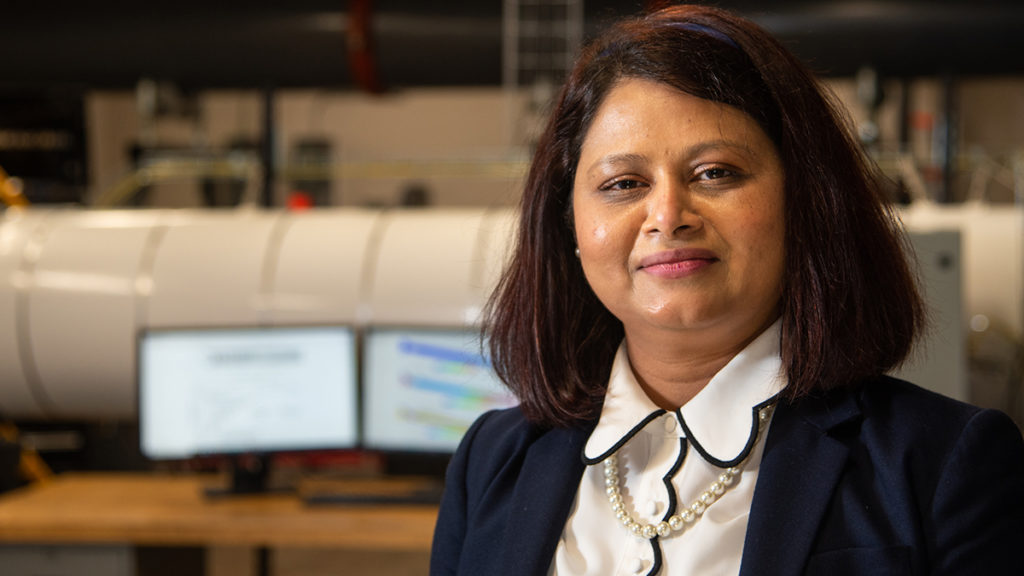
It’s no secret the UT Space Institute (UTSI) has been a key player in the development of various aviation innovations over the years.
Now, Associate Professor Ragini Acharya is advancing this legacy through a three-year grant from an Office of Naval Research (ONR) funded project aimed at mitigating a problem that can plague a particular high-speed airbreathing propulsion system known as a scramjet, a type of fast-flying vehicles that operate in a range faster than normal jet engines, up to the hypersonic level. Hypersonic speed is generally considered to be above Mach 5, or about 3,700 miles per hour.
“High-speed flight is at the forefront of the aerospace and defense community, which is a fundamental piece of what we do at UTSI,” said Acharya. “Problems occasionally arise—even in well-established fields—which require innovative solutions to overcome. That’s what we’re dealing with when it comes to scramjets.”
Both scramjets and ramjets feature internal combustion that takes place after high speeds have forced incoming air to become compressed before combustion. Unlike ramjets, which use a dampening mechanism to slow the flow before it exits the engine, flow from scramjets is released at full throttle, helping them perform at much higher speeds.
However, scramjets can also be susceptible to a phenomenon known as unstart, where the airflow can be disturbed and transform into sub-optimal flows, affecting performance.
Through a US Navy Office of Naval Research grant, Acharya and her collaborators at the University of Michigan hope to better model and predict unstart, helping to lessen its impact on the flight dynamic of the engine.
“Unstart is a major focus of scramjet-related research, but the amount of variation in flow and conditions related to it is vast,” Acharya said. “What we are proposing to tackle that issue in a cost-effective way is through the use of uncertainty quantification methods, which we would use in conjunction with computational fluid dynamics and control theory to help identify and control aspects of the flow path that are important.”
The team will also try to develop sensors, studying how different types, placements, and specifications interact until they find the optimal solution.
Since joining the UTSI faculty in 2020, Acharya has developed a robust research group with sponsored projects aiming at achieving the predictive modeling by utilizing machine learning, uncertainty quantification, and traditional computational fluid dynamics technology with applications on multidisciplinary aspects of hypersonic vehicles.